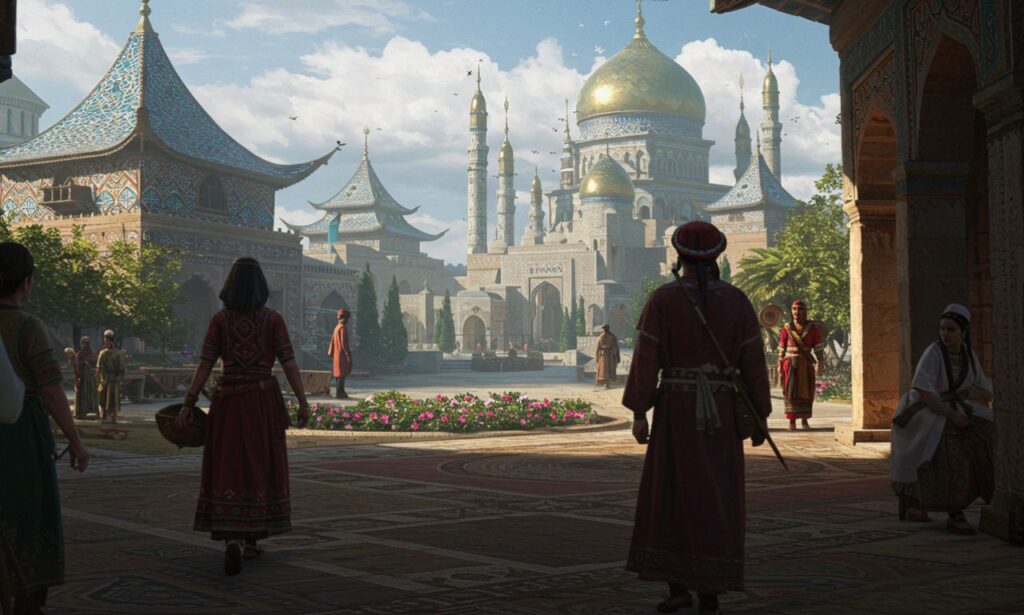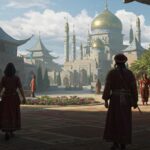In a world that often feels divided between the old and the new, there exists a fascinating space where tradition meets modernity—Antarvafna. This concept captures the essence of how age-old practices adapt to contemporary life, creating a rich tapestry woven from diverse cultural threads. From festivals and rituals to art forms and culinary delights, Antarvafna reflects our shared human experience. As we navigate this intersection, we discover not only what it means to honor our roots but also how to embrace change without losing our identity. Join us on this journey as we explore the captivating dynamics of Antarvafna and its role in shaping societies today.
What is Antarvafna?
Antarvafna is a fascinating concept that embodies the coexistence of tradition and modernity. It represents the delicate balance between cultural heritage and contemporary influences.
At its core, antarvafna highlights how individuals navigate their identities in a rapidly changing world. This term encompasses various practices, beliefs, and customs that have been passed down through generations while simultaneously adapting to new societal norms.
People engaging with antarvafna often find themselves at a crossroads. They seek to honor their roots while embracing innovation. This dynamic interplay creates rich cultural expressions that evolve over time.
Antarvafna serves as a reminder of our shared human experience—one where past traditions meet present realities in unique ways.
Understanding Antarvafna: Definition and Origins
Antarvafna is a concept that beautifully merges the essence of tradition with the modern world. Originating from ancient cultural practices, it reflects an intricate balance between heritage and contemporary values.
The term itself draws from linguistic roots that emphasize inner experiences and connections to one’s lineage. It embodies the idea of individuals navigating their identities amidst evolving societal norms.
Historically, many cultures embraced this duality as they faced shifts brought by globalization and technological advancements. The significance of Antarvafna lies in its ability to foster resilience within communities while honoring age-old customs.
As we explore different societies, we can witness how Antarvafna manifests uniquely across various landscapes. Each culture adapts its traditional narratives to resonate with present realities, showcasing both innovation and respect for ancestral wisdom. This dynamic interplay continues to shape lives around the globe today.
The Role of Tradition in Modern Society
Tradition serves as a vital anchor in modern society. It connects individuals to their roots, fostering a sense of identity and belonging. In an age often characterized by rapid change, these time-honored practices remind us of who we are.
Cultural rituals, family gatherings, and festivals bring communities together. They create shared experiences that reinforce bonds among generations. This continuity offers stability amidst the chaos of contemporary life.
Moreover, tradition can inspire innovation. When blended with modern ideas, it gives rise to unique expressions in art, cuisine, and fashion.
Embracing heritage doesn’t mean rejecting progress; it’s about harmonizing the old with the new. People find ways to honor traditions while adapting them for relevance today. Thus, tradition becomes a living entity—evolving yet steadfast—shaping our collective narrative as we navigate tomorrow’s challenges.
The Impact of Modernity on Traditional Practices
Modernity brings a whirlwind of change, often reshaping traditional practices. As technology advances, cultural rituals may adapt or even fade away. The rise of social media allows for global sharing but can dilute local customs.
Communities are now more connected than ever. This connectivity has fostered the exchange of ideas and traditions across borders. While some embrace this blending, others fear losing their unique identities.
Traditional crafts face challenges as mass production offers cheaper alternatives. Artisans struggle to compete with machine-made goods that lack personal touch and heritage.
Moreover, younger generations are pulled toward contemporary lifestyles. They often prioritize practicality over tradition, leading to a shift in cultural values. Yet within this tension lies an opportunity for revival—traditional practices can evolve while retaining their essence, creating a dynamic interplay between old and new ways of life.
Examples of Antarvafna in Different Cultures
Antarvafna manifests in various forms across cultures, showcasing the rich tapestry of human experience. In India, for instance, weddings blend ancient rituals with contemporary celebrations. Traditional ceremonies coexist with modern receptions, highlighting how love transcends time.
In Japan, the practice of tea ceremonies reflects a profound respect for tradition while adapting to modern lifestyles. While some still adhere strictly to customs, many incorporate personal touches that enhance their unique experiences.
Meanwhile, Indigenous communities worldwide often navigate this intersection through arts and crafts. They preserve age-old techniques while infusing contemporary themes into their work. This allows them to remain relevant in today’s fast-paced world.
In Africa, traditional storytelling is evolving as digital media becomes more prevalent. Storytellers now share tales through podcasts and social networks—keeping traditions alive while engaging younger generations who consume content differently.
Challenges Faced by Individuals Practicing Antarvafna
Practicing antarvafna can be a double-edged sword. Individuals navigating this space often face societal pressures that challenge their beliefs and practices. This conflict arises when traditional values clash with modern expectations.
Many feel isolated as they try to uphold customs that others may not understand or appreciate. Friends and family might question choices, leading to feelings of alienation.
Moreover, the fast-paced nature of contemporary life can make it difficult to engage with cultural rituals meaningfully. Time constraints and lifestyle changes often push traditions aside.
Economic factors also play a significant role. Accessing resources for traditional practices can be limited, especially in urban settings where globalization reigns supreme.
These challenges force individuals practicing antarvafna to find creative solutions while remaining true to themselves. Each struggle becomes part of a larger narrative about identity and belonging in an ever-changing world.
Finding a Balance Between Tradition and Modernity
Finding a balance between tradition and modernity is an intricate dance. It requires respect for the past while embracing the new.
For many, traditions offer a sense of identity and belonging. They connect individuals to their heritage, fostering community ties that have stood the test of time. Yet, as society evolves, so do needs and perspectives.
Modernity encourages innovation and change. It challenges us to rethink norms and adapt practices for contemporary life. This shift can lead to conflicts within cultural frameworks.
Navigating this intersection demands open dialogue among generations. Mutual understanding fosters collaboration rather than division. By blending traditional values with modern ideals, societies can create rich tapestries of culture that honor both aspects equally.
Embracing flexibility allows cultures to thrive in dynamic environments without losing their essence. The key lies in appreciating what each brings to the table—tradition’s roots alongside modernity’s wings.
Celebrating the Diversity of Cultures Through Antarvafna
Antarvafna encapsulates the rich tapestry of human experience. It highlights how cultures can intertwine, creating a vibrant mosaic that celebrates differences and shared values.
Through Antarvafna, traditional practices adapt and thrive in modern settings. This dynamic allows cultural expressions to stay relevant while honoring their roots.
Festivals worldwide showcase this blend beautifully. When local customs meet contemporary art forms, new traditions emerge, enriching society as a whole.
Food is another powerful medium for this celebration. Fusion cuisine exemplifies how diverse culinary practices can merge into something entirely unique yet familiar.
Artisans today often draw inspiration from ancestral techniques while incorporating modern materials or themes, resulting in stunning works that tell stories across generations.
By embracing Antarvafna, societies foster respect and appreciation for various cultures. This not only cultivates understanding but also strengthens community ties in an ever-evolving world.
Conclusion
Antarvafna embodies a unique blend of tradition and modernity, showcasing how cultures can evolve while maintaining their core values. As we navigate an increasingly globalized world, the ongoing dialogue between these two forces becomes essential.
The exploration of Antarvafna reveals not just the beauty in cultural practices but also highlights the challenges faced by individuals trying to balance these often conflicting aspects. By embracing both traditional customs and modern influences, societies can foster richer experiences that celebrate diversity.
As we continue to learn from one another through Antarvafna, it becomes clear that this intersection is not merely about coexistence; it’s about enhancing our collective identity as we move forward into the future. Embracing such complexities may lead us toward more inclusive societies where tradition thrives alongside innovation. The journey of understanding Antarvafna invites everyone to reflect on their own relationship with culture and identity.






